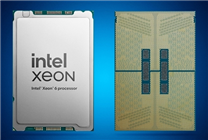Intel Unveils 18A Process: A New Era in Server CPUs
On August 31, Intel announced significant developments in its chip manufacturing process, aiming for mass production of its groundbreaking 18A process by the end of this year. This comes as a pivotal moment in Intel’s four-year, five-generation roadmap. The initial offerings based on this advanced technology will include both desktop and mobile CPUs, specifically the Nave Lake and Panther Lake series, along with the highly anticipated Diamond Rapids and Clearwater Forest server CPUs.
A Look at Diamond Rapids and Clearwater Forest
Diamond Rapids: Setting New Standards
Diamond Rapids, intended for high-performance computing, is set to redefine the capabilities of server processors. Notably, it boasts:
- Enhanced Architecture: With a full-core architecture encompassing up to 192 P cores, this marks a staggering 50% improvement over existing models.
- Memory Capabilities: Featuring 8/16-channel DDR5 memory, it also supports the cutting-edge PCIe 6.0 standard and the APX advanced performance expansion instruction set.
- AI Optimizations: The design is optimized for AI workloads, enhancing operations involving FP8 calculations.
Clearwater Forest: Power Meets Efficiency
Clearwater Forest is engineered for high-density computing environments and offers remarkable attributes including:
- Core Count: With an impressive leap to 288 cores, the architecture ensures robust processing power.
- Increased IPC: The improvement in Instructions Per Cycle (IPC) is about 17%.
- Expanded Cache: The third-level cache has been enhanced to 576MB, while it supports 12-channel DDR5-8000 memory, facilitating greater data throughput.
The 18A Process: Benefits Beyond Performance
The 18A process promises to deliver more than just conventional performance upgrades. Key benefits include:
- High Density: Clearwater Forest’s integration capabilities significantly enhance overall computing density.
- Reduced Hardware Footprint: According to Don Soltis, an Intel Xeon processor architect, upgrading from the previous generation Xeon 2 processors will result in an astounding 8:1 integration effect. What once required 1,400 Xeon cabinets can now operate efficiently with just 180 cabinets.
Implications for Data Centers
This leap in integration is not merely a technical advancement; it has practical consequences for data centers:
- Maintenance Simplification: Fewer machines mean easier maintenance and management.
- Space Efficiency: A reduced number of servers translates to less physical space needed, alleviating concerns related to floor space in data centers.
- Cost Reduction: Total Cost of Ownership (TCO) will see significant decreases, primarily through lower power consumption and reduced cooling requirements.
Future Outlook
As Intel gears up for the mass production of its 18A process technology, the implications for the server market are profound. Both the Diamond Rapids and Clearwater Forest processors are positioned to tackle the demanding workloads of modern enterprises, promising substantial improvements in performance, efficiency, and cost savings.
Through these innovations, Intel is reaffirming its commitment to leadership in the semiconductor industry, aiming to meet the growing demands of data-centric workloads. The upcoming releases are not just technological advancements but pivotal shifts that may redefine data processing paradigms across various sectors.
Conclusion
The introduction of the 18A process is set to usher in a new era in server computing, with Intel’s commitment to enhancing integration, performance, and efficiency. Stay tuned as these advancements roll out and reshape the landscape of high-performance computing.
For further updates on Intel’s innovative technologies and insights into the future of computing, keep following our coverage.







